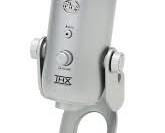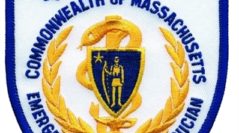Your department has a policy that they send two ambulances to reported cardiac arrests. On one particular busy night two of your trucks are dispatched to a person reportedly not breathing. The first truck gets on scene and finds a patient beyond help. Before they can cancel the second ambulance, they are involved in an intersection accident. In response to this incident the next morning your director releases a memo stating that second ambulances will no longer be dispatched to cardiac arrests. In a labor management meeting, an employee suggests development of an “emergency code” for field personnel to report to dispatch that they are in trouble to help activate a large law enforcement response to assist them at their location. Your boss says that this will not happen because they think field crews will abuse it. A week later, a paramedic is seriously assaulted by a psychiatric patient. The dispatcher on the other side of the radio was unable to make out their calls for help. Your boss then revisits the policy. Your division uses a non-disposable laryngoscope blades. A supervisor goes to your boss and suggests following the industry trend and shifting to disposable ones to reduce the risk of infection for patients. Your boss decides against this since your company has never been sued by someone receiving an infection from this means of transmission. You are convinced that the only way this policy will change is through some sort of tragedy. All three of these incidents are loosely based on actual events that I have either been part of or have heard about from friends of mine working in different systems throughout the United States. They are all evidence of the same though, change driven by catastrophe. We have all experienced it at some point in our career. We have all been sitting around in a conversation with our friends and coworkers and had somebody utter the words, “Nothing is going to change until somebody gets hurt.” Some of this attitude from leadership is because of a generalized disconnect from the field. Some of it is because of the kneejerk, reactive nature of EMS that seems to carry on with people...
The Podcast

We took the week off last weeks or Labor Day and this week the podcast is back with a short interview that I did on Jamie Davis’ The Medicast where we talk about the show and what it is all about. Regular shows will be back next week! Enjoy! To download the show in MP3 format, follow this link! Otherwise check the show out below: ...
Read MoreFor Leadership

Roughly twelve years ago, AMR and AEV’s Safety Concept Vehicle made its way to Springfield for us to take a look at. It included a number of interesting features like an expanded harness setup to allow providers to move a little more freely around the box while still being anchored. There were mounting brackets for cardiac monitors, and video cameras to monitor both the rear of the truck for backing up, and the passenger side to check for traffic before opening the curbside door. The vehicle itself contained a lot of positives that have been adopted over the years. I see more cameras used in emergency vehicles and I’m a a fan of the checkered or striped patterns on the backs of trucks to make them more visible to oncoming traffic. I have also seen a few more monitor brackets. But where is everything else? When is that ambulance of the future going to get here? Year after year at conference after conference, there will undoubtedly be some ambulance parked on the exhibit hall floor touting itself as the “ambulance of...
Read MoreFor the Field

There has been a lot of buzz over the past week about California’s EMS Bill of Rights. Dave Konig has a great take on it over at The Social Medic that I encourage you to read. American Medical Response has even launched a counter campaign to it complete with the hashtag #LivesBeforeLunch. While that makes me cringe a bit, I want to touch on one line of AMR’s response to the bill that stuck with me. “As written, AB 263 is an unprecedented political power grab, and will heavily penalize private – but not public – employers of EMTs and paramedics.” When I look back at my career with AMR that spanned more than twelve years, I had a lot of ups and downs. Had busy shifts and I had slow shifts. I found myself mandated to work despite being sick, or just needing a day off. Through the highlights and the lowlights of working in a busy 9-1-1 system that amassed roughly 40,000 calls per year, the instances where my 12 hour shifts hit double digits were rare when compared...
Read MoreLessons to Learn

Any time I peruse the pages of EMS related articles I will inevitably come across some service that is trying to take over another service’s area. Diving deeper into those articles usually reveals the same usual arguments. Imagine my surprise when I clicked on an article about the East Longmeadow Fire Department’s move to take over EMS response in the town of East Longmeadow. I should first point out that what I am about to write is meant to represent my own personal views on the state of the industry. I have not inquired about anything having to do with the current staffing of ambulances and volume. What I am reflecting on is the article and just the article coupled with my years of experience in the greater Springfield area. Just to give a little bit of background here, I used to have a dog in this fight. As many of you know, I was a 12-year employee of American Medical Response, the last seven of which as a supervisor. I participated in contract bids for the town, and saw service...
Read MoreRecent Posts
Why Rhode Island is Getting It Right

Apr 24, 2017
As I said in last week’s article about Bob Harper, I am kind of playing catch up with a lot of topics, this being one of them. In late 2016, the State of Rhode Island announced publicly that on March 1 of this year, there would be a significant protocol change to their cardiac arrest protocols. Crews would be expected to remain on scene for 30 minutes prior to being transported. Topically, I applaud Rhode Island’s Department of Health for being as public and transparent as they were about this change. Anybody who has been in the field for even a modest amount of time has been on a scene where they were asked “why aren’t you just taking them to the hospital?” In some cases, there is some merit to that. In some cases there is very little that we as paramedics and EMTs can do for a patient on a scene. Cardiac arrest is not one of those emergencies. I saw some pushback online from some who consider themselves experts on the topic, but that’s neither here nor there. One common complaint that I saw revolved around scene safety. Obviously, scene safety trumps all. If I am coding someone in the middle of a street with an aggressive or growing crowd, I am going to think about moving. But on these calls are the exception to the rule, and on the vast majority of runs, even in the worst areas of someone’s coverage area, communication with families goes a long way. “We are doing everything for them right here that they would get in the emergency room. It is their best chance to survive.” That’s the common statement that I have made a number of times to families of patients in cardiac arrest. Maybe those dissenters failed to read the protocol, it states “Regardless of proximity to a receiving facility, absent concern for provider safety, or traumatic etiology for cardiac arrest, resuscitation should occur at the location the patient is found.” Emphasis is mine. Most of the write ups that I read from the online blogging community were written on or around the month of December. It is certainly possible that the...
Surviving Cardiac Arrest

Apr 21, 2017
I’ve been out of this writing game for a bit, so you are all going to have to forgive as I play catchup to some stories that might be just a little older. I assure you that they still carry relevance. In my time “away” from writing, I’ve been doing a lot with the Resuscitation Academy. Yes, that Resuscitation Academy. I teach its concepts, and some of my colleagues and I have completely drank the Kool-Aid. I will talk more about that at a later date, but I point it out here because I’ve become very passionate about all things cardiac arrest care which brings me to today’s story. Some of you might have read the story about Biggest Loser trainer Bob Harper who, while at Cross Fit in February, suffered a sudden cardiac arrest. In the article posted by CNN, Harper talks about how “. . . the fact there were doctors in the gym when I had the attack saved my life.” He talks about how the doctors did CPR on him, and the doctors pulled the AED off of the wall and used it on him. Mr. Harper is right, the almost immediate CPR and early defibrillation saved his life, there is absolutely no doubt about that, but the fact that the two people who provided care to him were doctors is completely irrelevant. It wasn’t two doctors who saved his life, it was two people who were willing to act instead of just waiting for someone else to do something. In this case, their occupation is not important. I do not want to diminish the heroics of this event but had the story could have been an incredibly powerful vessel had it been told a different way. The message that people need to hear in this case is that they need to learn CPR, some kind of CPR. They do not need an AHA card in their pocket but understanding the fundamentals of hands-only CPR, for example, a skill that can been learned in 15 minutes or less, is one that can save a life. Knowing where the AED’s are in the gym where you work out, or having the...
The Surfside Beach CPR Debacle
The first time I laid hands on a patient’s chest and did CPR, I was 16 years old. There were probably close to a dozen total times that I used the skill that I learned at the age of 14 before I was legally able to be the treating EMT by myself in the back of an ambulance, a responsibility that one must be 18 to hold. On the overwhelming majority of the CPR calls that I have been on in my career, let alone those two years before I was of legal age, I left the patient just like I found them, dead. On January 25, 2015, the Surfside Beach Fire Department in South Carolina rolled a rig with a CPR certified junior firefighter on the truck. At some point, it was that teenager’s turn to tag in on compressions and do their two minute duty. Much like nearly 93% of all cardiac arrests worked nationwide, that crew from the Surfside Beach Fire Department left the patient how they found them, dead, much to the dismay of the Surfside Beach town council. Almost a month ago, an “unnamed official” with the town filed a complaint, prompting an investigation by the State of South Carolina’s Department of Health and Environmental Control. The investigation, concluded earlier this week, found no evidence of wrong doing despite the shock and horror expressed by town officials. These are the kinds of stories that make the news that are related to our industry. No matter how futile the efforts might be, the loss of a patient is obviously catastrophic to a patient’s family, but blaming a teenager for performing a skill that is taught to kids as young as 10 is preposterous. Thankfully, there are many who agree with me on this stance. I got my start as a cadet on my first volunteer squad, and I had the chance to mentor a few other cadets over the years. It takes a special kind of person to handle the responsibilities that an EMT or first responder is tasked with at such a young age, but for every call, much like that junior firefighter in South Carolina, I was closely...
Let’s Talk About Delivery
I wanted to follow up on my reply to Councilman John Bendel’s letter to the editor in the Asbury Park Press a little bit and talk about delivery and goals. Realistically, regardless of what sort of department an EMT or paramedic works for, their goal should be the same. We should be aiming to reduce morbidity and mortality of the conditions that we can directly impact and for those that we cannot have lasting impact on in the prehospital setting, we should aim to deliver them to a place where they can get treatment while doing everything that we can in our time with him to promote a favorable outcome in our limited time with the patient. Too often, when debating about what delivery method works best, we get caught up in the weeds of the minor details that have a greater impact on the provider than the patient. We worry about the training that we must do and the time that it takes, or the unproven theory that people serving their own community has a greater impact on patient outcome than the ability of the provider. We get hung up on the importance of response times when they have less to do with patient outcome than care provided in most cases. In Bendel’s letter, he touched on the fact that “MONOC can probably tell us how many lives were saved because a highly qualified EMT was on calls. But no one can tell us how many lives were saved because a local squad got people to the hospital faster than MONOC would have.” He’s probably right, but we need to ask ourselves why this is. With a call volume that is often a fraction of what MONOC runs, why can’t volunteer squads better report their impact on patient outcomes? I think that the answer to this is twofold. First, most squads probably do not possess the outcome data that a company that MONOC has access to. That is partially the fault of the system for not including volunteer services in this feedback loop, and partially on the squads for not seeking it out, and creating the infrastructure within their organization to acquire it....



Recent Comments